
If you are a veterinary student or a veterinarian searching for the best veterinary books to keep your knowledge up to date with the latest research, techniques, and clinical practices.
We have made this great list of the Top Veterinary Books For Veterinarians and students in 2025. We have selected over +100 Books for Veterinary Professionals and Students on many different aspects of veterinary medicine that help in studying, learning, and increasing their veterinary knowledge and practical skills. These Veterinary books can be considered the best vet books to buy to prep for veterinary school because these resources also include the basic sciences in veterinary medicine.
Small Animal Books

Blackwell’s Five-Minute Veterinary Consult: Canine and Feline, 7th Edition
A trusted resource for quick access to canine and feline disease information. Covering 845 disorders, it provides concise, practical guidance on diagnosis, treatment, and client communication. Essential for small animal practitioners needing fast, reliable veterinary consults.

100 Top Consultations in Small Animal General Practice
This book provides essential guidance on 100 core cases commonly encountered in small animal practice. Organized by presenting signs or diseases, it helps veterinarians diagnose and manage conditions effectively. Ideal for students, new graduates, and vets seeking a refresher. Covers diagnosis, interventions, and client communication.
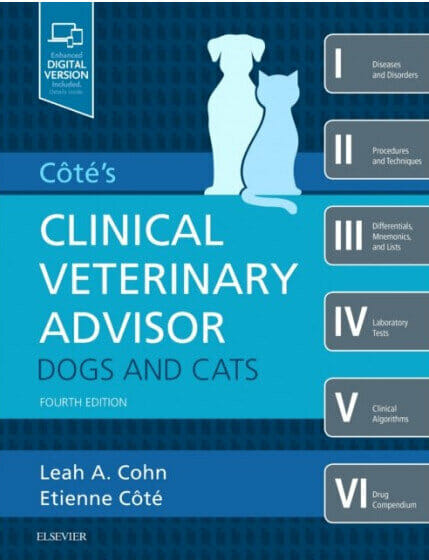
Cotes Clinical Veterinary Advisor Dogs and Cats, 4th Edition
A must-have for small animal practitioners, offering concise coverage of diseases, procedures, lab tests, and drug compendium. Features over a dozen new chapters on hyperadrenocorticism, hypercalcemia, and meningoencephalitis. Includes access to a searchable website with bonus content, images, videos, and client handouts.

Small Animal Surgery, 5th Edition
Fossum’s guide covers all essential surgeries, from routine spays to advanced neurosurgery. Includes updates on imaging, regenerative medicine, and minimally invasive surgery. Comes with Expert Consult access, providing surgical videos, animations, case studies, and a vast image collection.
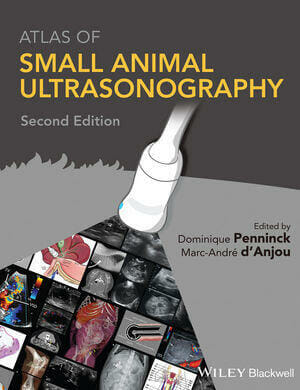
Atlas of Small Animal Ultrasonography, 2nd Edition
A complete reference for ultrasound techniques in small animal practice, featuring 2000+ sonograms, illustrations, and case studies. Covers both common and rare disorders with new chapters on artifacts and contrast sonography. Includes companion website access with 140+ annotated video loops.
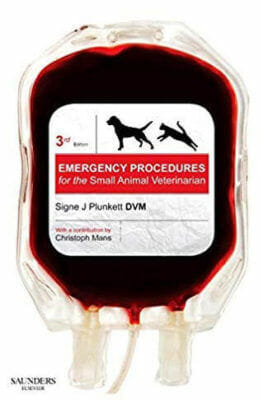
Emergency Procedures for the Small Animal Veterinarian, 3rd Edition
A must-have emergency guide for small animal veterinarians. Features step-by-step procedures, updated protocols, and an all-color design for quick reference. Ideal for solo practitioners and ER vets needing fast, reliable guidance in urgent cases.
Farm Animals Books
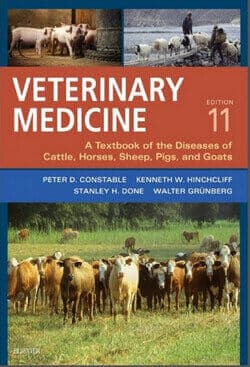
Veterinary Medicine: A Textbook of the Diseases of Cattle, Horses, Sheep, Pigs, and Goats, 11th Edition
A definitive resource on large animal diseases, covering horses, cattle, sheep, goats, and pigs. Includes clinical examination principles, diagnosis techniques, and therapy recommendations. Now structured in two volumes for a logical, anatomy-based approach.
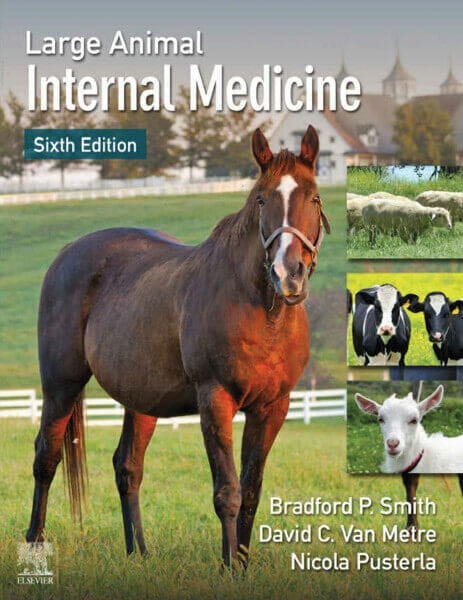
Large Animal Internal Medicine, 6th Edition
A problem-based approach to diagnosing and managing equine and ruminant diseases. Features 150+ clinical signs, lab testing insights, new vaccines, genetic diagnostics, and updated global disease coverage for modern veterinary practice.
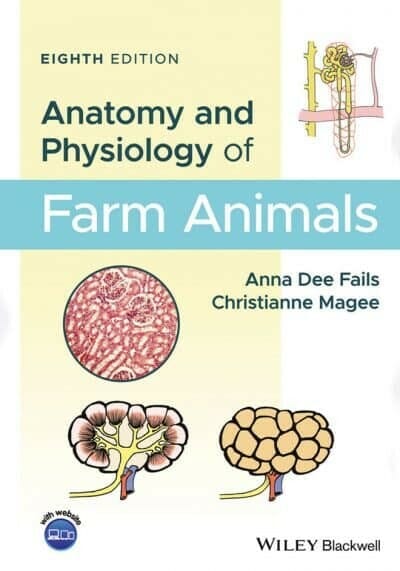
Anatomy and Physiology of Farm Animals, 8th Edition
An essential guide to farm animal anatomy and physiology. Includes learning objectives, new material on metabolic regulation, additional illustrations, and access to a companion website with practice questions and videos.

Farm Animal Anesthesia: Cattle, Small Ruminants, Camelids, and Pigs, 2nd Edition
A practical guide covering anesthesia and pain management for farm animals, incorporating the latest drugs, equipment, and surgical techniques. Includes updated regional anesthetic techniques and advanced standing surgery procedures.
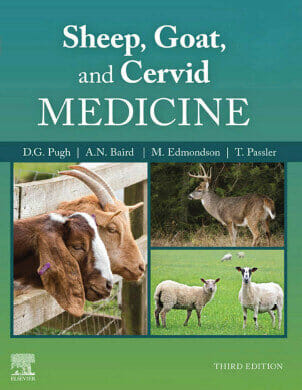
Sheep and Goat Medicine, 3rd Edition
A comprehensive reference covering diseases, surgery, pain management, theriogenology, and nutrition for sheep and goats. Includes step-by-step procedures and expanded coverage of cervid medicine.
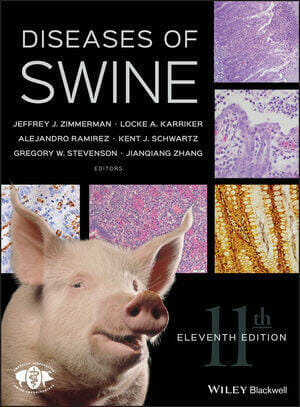
Diseases of Swine, 11th Edition
The definitive reference on swine health and disease, completely revised with full-color images, expanded welfare and behavior coverage, and the latest research. Features insights from 100+ international experts.
Equine Books
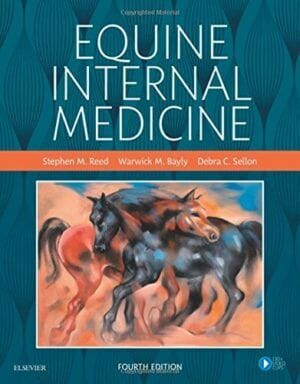
Equine Internal Medicine, 4th Edition
The definitive guide to diagnosing and managing equine diseases. Covers pathophysiology, treatment principles, and a problem-based approach. Includes over 120 video clips on a companion website for enhanced learning.

Equine Surgery, 5th Edition
Comprehensive guide to equine surgical procedures, from basic techniques to complex orthopedic and soft tissue surgeries. Covers anesthesia, imaging, and wound management with step-by-step explanations.
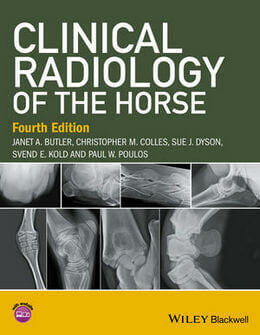
Clinical Radiology of the Horse, 4th Edition
A practical guide to equine radiography and interpretation. Features an atlas of normal and pathological images, updated digital imaging techniques, and a companion website with additional cases and lesions.
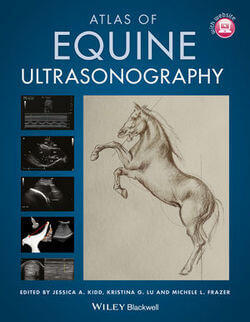
Atlas of Equine Ultrasonography
A comprehensive visual guide to equine ultrasonography covering musculoskeletal, reproductive, and internal medicine areas. Features positioning diagrams and a video library with over 50 ultrasound exams.

Equine Dentistry, 3rd Edition
An extensively illustrated guide covering all aspects of equine dental care and oral procedures. Updated with new contributions from experts and step-by-step instructions for veterinary professionals.
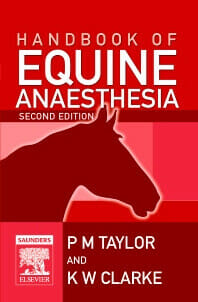
Handbook of Equine Anaesthesia, 2nd Edition
A practical guide covering all aspects of equine sedation and anesthesia, from pre-anesthetic preparation to monitoring and recovery. Includes a new chapter on analgesia for pain management.
Zoo& Wildlife Books
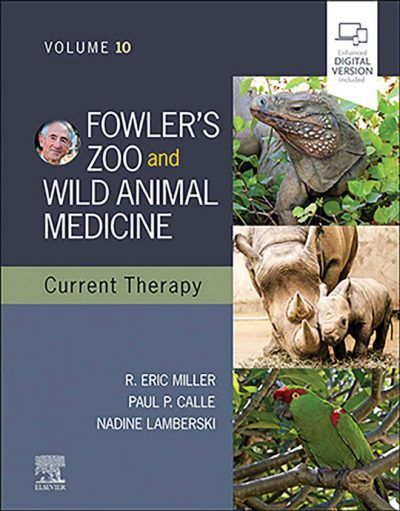
Fowler’s Zoo and Wild Animal Medicine, Volume 10
A comprehensive guide covering the latest research on zoo and wild animal medicine. Includes updates on antibiotic resistance, amphibian imaging, and Brucella in marine animals, with expert contributions.
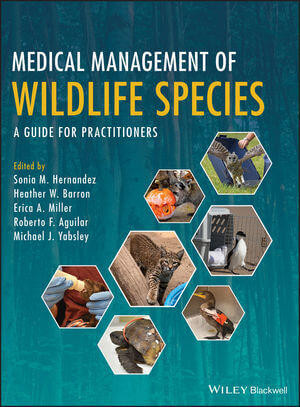
Medical Management of Wildlife Species
A comprehensive resource covering wildlife triage, emergency care, and epidemiology. Provides practical guidance for veterinarians treating birds, mammals, amphibians, and turtles in clinical settings.

Zoo and Wild Mammal Formulary
A quick-reference formulary for drug dosages in over 35 mammal groups, including marsupials, bears, and elephants. Organized by taxa with detailed dosing and reliable references.
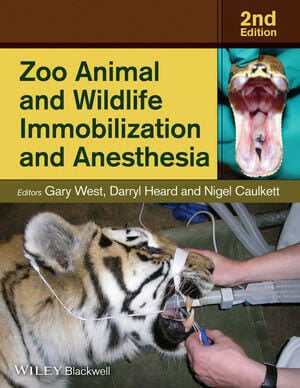
Zoo Animal and Wildlife Immobilization and Anesthesia, 2nd Edition
A fully updated guide covering anesthesia techniques for captive and wild animals. Includes expanded content on avian, aquatic species, pain management, and emergency procedures.
Avian Books
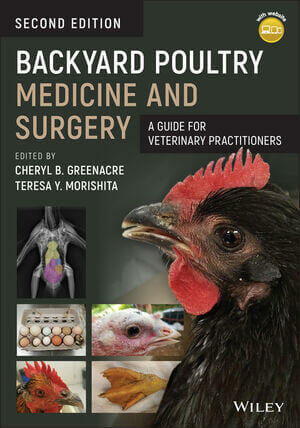
Backyard Poultry Medicine and Surgery, 2nd Edition
A comprehensive guide for poultry treatment, covering radiology, toxicology, emergency medicine, behavior, and pathology. Essential for veterinarians treating backyard poultry.
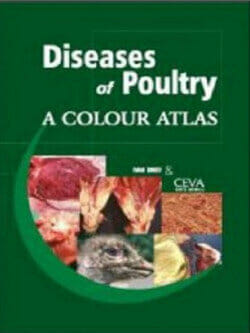
Diseases of Poultry, A Colour Atlas
An atlas featuring 557 high-quality images covering infectious and non-infectious poultry diseases. Ideal for veterinarians, students, and poultry specialists.
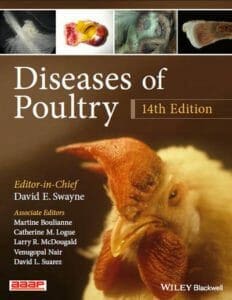
Diseases of Poultry, 14th Edition
The definitive reference on poultry diseases, fully updated with new diagnostic tools, disease control strategies, and management insights from clinical veterinarians.
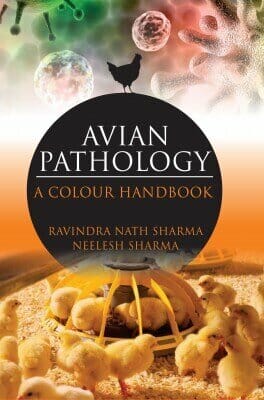
Avian Pathology, A Colour Handbook
A comprehensive guide covering bacterial, viral, fungal, and parasitic diseases in poultry. Features 74 concise chapters with clinical signs, diagnosis, treatment, and control measures.
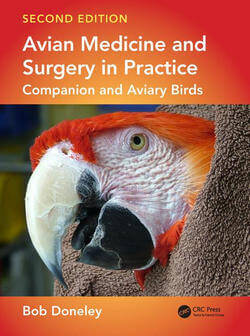
Avian Medicine and Surgery In Practice, 2nd Edition
A vital reference for avian veterinarians, covering diagnostic tests, clinical techniques, husbandry, grooming, imaging, endoscopy, and oncology. Includes 100+ color illustrations.
Anaesthesia Books

Veterinary Anesthesia and Analgesia, 6th Edition
A comprehensive reference on veterinary anesthesia and pain management, covering patient monitoring, pain control, infection prevention, ultrasound, and safety culture.

Veterinary Anaesthesia, 11th Edition
An essential resource covering anesthesia techniques for various species, including small mammals, fish, and wildlife. Features evidence-based practices and CPCR updates.

Handbook of Veterinary Pain Management, 3rd Edition
A practical guide to pain management in veterinary medicine, covering analgesic drugs, pain assessment, acute and chronic pain treatment, and care for exotic animals.

Anesthesia of Exotic Pets
A practical guide for veterinary professionals covering anesthesia techniques, drug doses, monitoring, and peri-anesthetic care for exotic pets, including small mammals, reptiles, and birds.
Emergency and Critical Care Books

Veterinary Emergency and Critical Care Procedures, 3rd Edition
A practical step-by-step guide covering life-saving emergency procedures for dogs and cats. Includes updated techniques such as thoracostomy tube placement, airway washes, and blind intubation.
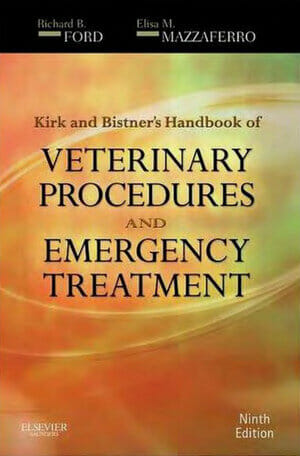
Kirk & Bistner’s Handbook of Veterinary Procedures and Emergency Treatment, 9th Edition
A trusted handbook covering step-by-step emergency procedures and treatment protocols for small animal practice. Essential for quick decision-making in urgent veterinary care.
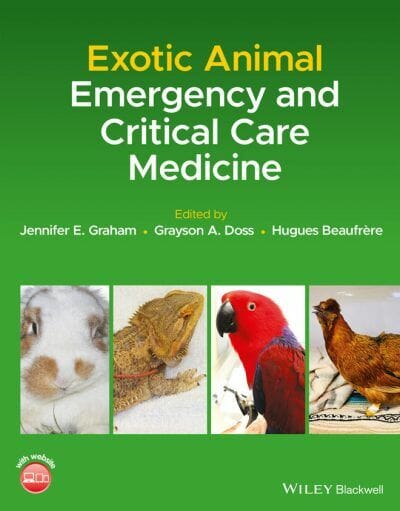
Exotic Animal Emergency and Critical Care Medicine
A specialized reference for emergency and critical care treatment of exotic pets, including birds, reptiles, and small mammals. Features case-based approaches and best practices.
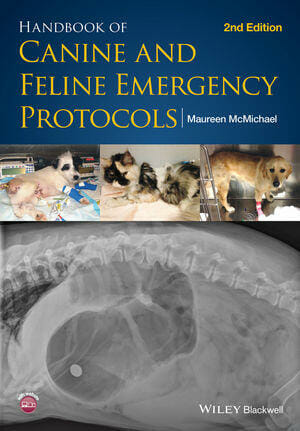
Handbook of Canine and Feline Emergency Protocols, 2nd Edition
A concise, practical guide to managing emergency situations in dogs and cats. Covers rapid assessment, treatment protocols, and decision-making strategies for critical cases.
Dermatology Books

Diagnostics and Therapy in Veterinary Dermatology
Covers the latest treatments, drugs, and diagnostic techniques for veterinary dermatology. Offers practical guidance for general practitioners and specialists dealing with skin conditions.
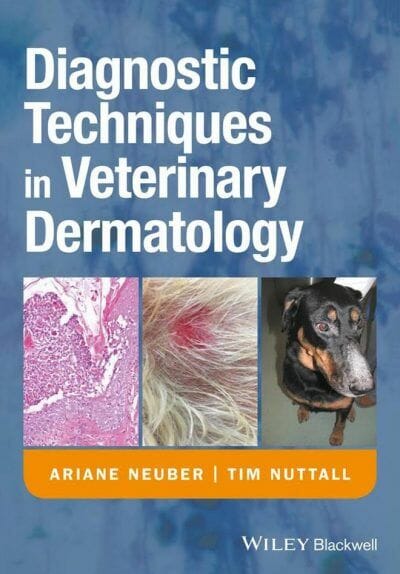
Diagnostic Techniques in Veterinary Dermatology
A step-by-step guide for diagnosing dermatological conditions in small animals, horses, and exotic pets. Includes techniques for cytology, fungal cultures, allergy testing, and imaging.

Infectious Disease Management in Animal Shelters, 2nd Edition
A comprehensive guide on preventing, managing, and treating infectious diseases in animal shelters. Provides strategies based on the latest research and real-world experience.

Infectious Diseases of the Horse: Diagnosis, Pathology, Management, and Public Health, 2nd Edition
A practical guide covering bacterial, viral, protozoan, fungal, and parasitic diseases in horses. Includes diagnostic techniques, clinical pathology insights, and differential diagnosis tables.
Dentistry Books Books

Wiggs’s Veterinary Dentistry: Principles and Practice, 2nd Edition
This comprehensive resource covers all aspects of veterinary dentistry, from basic principles to advanced procedures. Updated with the latest research, this edition includes enhanced imaging, expanded coverage of dental pathology, and step-by-step treatment techniques. Written by leading specialists, it provides practical guidance on oral health, surgery, and disease management, making it an essential reference for veterinarians and students.
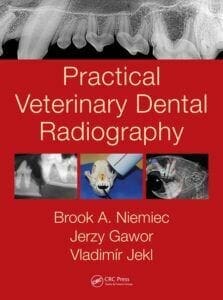
Practical Veterinary Dental Radiography
A complete guide to dental radiography in veterinary practice, covering imaging techniques, interpretation, and pathology. This book includes over 1,000 high-quality images demonstrating normal and abnormal findings. It provides detailed instructions on equipment use, positioning, and troubleshooting errors. Special sections on exotic species offer insights into unique radiographic challenges, making it an essential reference for veterinarians and students.

Blackwell’s Five-Minute Veterinary Consult Clinical Companion Small Animal Dentistry, 3rd Edition
A quick-reference guide covering all aspects of small animal dentistry, from routine cleanings to complex procedures. This edition features updated treatment protocols, advanced imaging techniques, and new classifications. The book provides step-by-step instructions, case studies, and a companion website with video tutorials. Ideal for busy practitioners, it delivers fast, reliable information for diagnosing and treating dental conditions in dogs and cats.

Veterinary Periodontology
A practical reference on periodontal disease in dogs and cats, covering etiology, pathogenesis, and clinical management. This book provides step-by-step guidance on diagnosing and treating periodontal disease, with detailed procedures and full-color images. Essential for veterinarians, students, and technicians, it integrates veterinary-specific knowledge with human dentistry insights to improve patient care and outcomes in small animal dentistry.

Veterinary Dentistry for the General Practitioner, 2nd Edition
An updated guide offering practical knowledge on diagnosing, preventing, and treating oral conditions in dogs and cats. This edition covers common and complex dental diseases, emphasizing best practices in general practice. It also includes guidance on lagomorph and rodent dentistry, helping veterinarians recognize issues requiring specialist referral. A valuable reference for general practitioners and students aiming to enhance their dental skills.

Zoo and Wild Animal Dentistry
A groundbreaking resource covering dental care in zoo and wild animals. This book details oral pathology, dental procedures, and treatment strategies for over 300 species, including carnivores, herbivores, marine mammals, birds, and reptiles. With high-quality illustrations, it provides practical techniques for diagnosing and managing dental conditions in exotic animals. Essential for veterinarians working with wildlife, zoos, and conservation programs.

Principles of Equine Dentistry
A practical guide covering equine dental anatomy, biomechanics, radiology, anesthesia, and disease management. This book highlights key differences between equine and small animal dentistry while maintaining a structured approach to diagnosis and treatment. Featuring high-quality images, it serves as an essential reference for equine practitioners, veterinary students, and specialists looking to enhance their expertise in equine dental care.
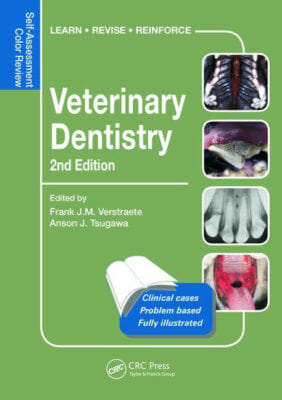
Veterinary Dentistry: Self-Assessment Color Review, 2nd Edition
A case-based self-assessment guide featuring 228 real-life cases covering all aspects of veterinary dentistry. Each case includes questions with visual aids such as radiographs and clinical images, followed by detailed explanations. Updated with 50+ new cases, it is an excellent resource for exam preparation, continuing education, or refining clinical skills. Perfect for veterinarians, students, and dental specialists in small animal practice.
Ophthalmology Books
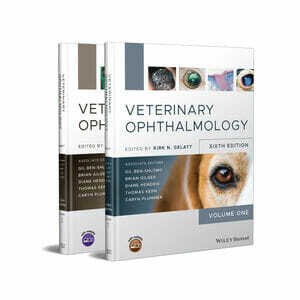
Veterinary Ophthalmology: Two Volume Set, 6th Edition
A definitive reference covering veterinary ophthalmology in all species, including dogs, cats, horses, and exotics. This fully updated edition features expanded coverage on feline, equine, and avian ocular conditions with nearly 2,000 color images. It also includes a companion website with videos and PowerPoint images, making it an essential resource for veterinarians, students, and specialists managing eye diseases in animals.

Slatter’s Fundamentals of Veterinary Ophthalmology, 6th Edition
A comprehensive guide to recognizing, diagnosing, and managing ocular diseases in animals, covering dogs, cats, horses, and exotics. Featuring over 1,000 color images, this resource includes updated diagnostic techniques, surgical methods, and emergency protocols. Written by leading experts, it is ideal for veterinarians, students, and specialists seeking a practical yet detailed approach to veterinary ophthalmology.
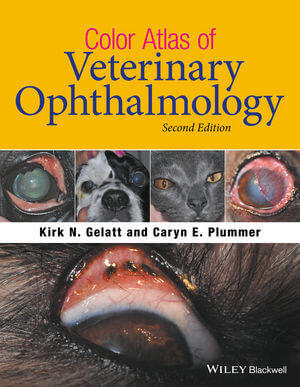
Color Atlas of Veterinary Ophthalmology, 2nd Edition
A highly visual reference providing over 1,000 clinical images of ophthalmic conditions in small, large, and exotic animals. This atlas helps veterinarians diagnose ocular diseases with confidence, covering anatomy, clinical signs, differential diagnoses, and treatment options. New introductory chapters focus on ophthalmic examination techniques, making this an essential tool for veterinary practitioners and students.

Veterinary Ophthalmic Surgery, 2nd Edition
A step-by-step guide to ophthalmic surgery for all animal species, covering pre-, intra-, and post-operative procedures. Featuring illustrated surgical techniques, anesthesia guidelines, and instrument selection, this book is an essential resource for veterinarians specializing in ophthalmology. Expertly edited by Galatt and Plumber, it provides practical solutions and updates on key issues in animal eye surgery.

Ophthalmic Disease in Veterinary Medicine, 2nd Edition
A fully revised and expanded reference on ophthalmic diseases in small and large animals. Covers clinical signs, diagnosis, prognosis, therapy, and inherited eye disorders. With contributions from international experts, this book is an essential resource for veterinarians, students, and ophthalmology specialists dealing with ocular conditions in companion and farm animals.
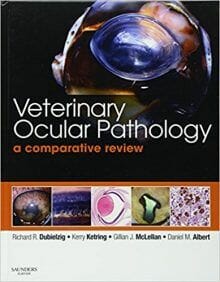
Veterinary Ocular Pathology: A Comparative Review
A practical guide linking clinical features of ocular disease with pathology. Features high-quality images, side-by-side clinical and histopathological comparisons, and diagnostic tips. Covers eye diseases across multiple species, including companion and exotic animals. An invaluable reference for veterinarians, pathologists, and students in ophthalmology.

Ophthalmology for the Veterinary Practitioner, 2nd Edition
A practical guide covering diagnosis and treatment of common eye diseases in various species. Features practical tips for non-specialists, differential diagnosis guides, and a special chapter on ophthalmic emergencies. Ideal for general practitioners, students, and specialists looking for a quick reference on veterinary eye care.
Surgery Books

Veterinary Surgery Small Animal, 2nd Edition
A comprehensive two-volume guide covering all aspects of small animal surgery. This fully updated edition includes detailed discussions of disease processes, surgical techniques, and case management. Features step-by-step procedures, clinical science insights, and expert-reviewed content. Essential for surgical specialists, practitioners, and veterinary students seeking authoritative guidance on small animal surgery.

Veterinary Surgery: A Practical Guide
Designed for veterinary students and field practitioners, this guide covers essential surgical principles, anesthesiology, diagnostics, regional surgery, and orthopedics. Features over 80 illustrations of instruments, suturing techniques, and surgical sites. Offers practical insights for daily veterinary practice and surgical decision-making. An invaluable reference for students and veterinarians handling routine and emergency cases.

Laser Surgery in Veterinary Medicine
A complete guide to using surgical lasers in veterinary practice. Covers principles, techniques, and procedures for various species, including small animals, equines, exotics, and reptiles. Includes step-by-step surgical protocols, recommended laser settings, and high-quality images. Features a companion website with video demonstrations. Ideal for veterinarians looking to incorporate laser technology into clinical practice.

Surgical Instrumentation: An Interactive Approach, 3rd Edition
A visually rich guide featuring hundreds of full-color images detailing surgical instruments, their purpose, and setup. Written for surgical technologists, it provides unmatched clarity with close-up views of instrument tips. Includes interactive tools like 360-degree rotations, flashcards, and quizzes for enhanced learning. Essential for students and practitioners in surgical disciplines needing quick, reliable reference for instrument identification and procedures.

Veterinary Surgical Oncology, 2nd Edition
A comprehensive reference covering surgical oncology for small animal patients. This edition details surgical procedures, diagnostics, complications, and aftercare while discussing prognosis, multimodal therapy, and interventional radiology. Features expert insights from top veterinary oncologists and surgeons, providing critical decision-making guidance for cancer treatment in animals. A must-have resource for veterinary surgeons and oncology specialists.
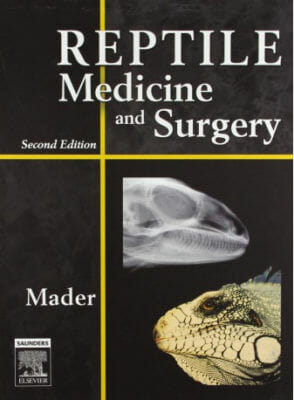
Reptile Medicine and Surgery, 2nd Edition
An essential guide for diagnosing, treating, and managing reptile and amphibian cases. Covers species-specific medicine for snakes, lizards, turtles, and crocodilians. Features step-by-step instructions on anesthesia, imaging, pathology, and surgery. Includes a disease reference section organized alphabetically. Written by leading experts, this book is an invaluable resource for veterinarians, researchers, and students working with exotic species.
Clinical Pathology Books

Fundamentals of Veterinary Clinical Pathology, 3rd Edition
A comprehensive guide to veterinary clinical pathology, covering laboratory assays, their diagnostic relevance, and disease mechanisms in domestic animals. This edition includes expanded discussions on diagnostic tests, pathophysiologic interpretations, and illustrations to enhance understanding. Organized by disease mechanisms, it provides a conceptual framework applicable across species. Essential for students and practitioners seeking a thorough understanding of laboratory medicine.

Schalm’s Veterinary Hematology, 7th Edition
The definitive reference for veterinary hematology, this edition provides an in-depth review of blood disorders across species, including confined and free-ranging animals. It covers emerging topics in diagnostics, new techniques, and advances in hemolymphatic tissue studies. With contributions from global experts, it offers a structured approach to hematology with expanded sections and reorganized content for easier access. Ideal for researchers, clinicians, and students.

Duncan and Prasse’s Veterinary Laboratory Medicine: Clinical Pathology, 5th Edition
This updated edition provides a problem-solving approach to veterinary clinical pathology, covering hematology, urinalysis, cytology, and biochemistry in domestic animals. Now in full color, it offers a clear, structured format with tables, key terms, and case-based examples to support laboratory data interpretation. Designed for quick reference, it is ideal for veterinarians, students, and diagnostic laboratory professionals who need accurate and accessible clinical pathology insights.

Veterinary Hematology, Clinical Chemistry, and Cytology, 3rd Edition
A comprehensive guide covering hematology, clinical chemistry, and cytology for both domestic and non-domestic species. This edition includes new veterinary cytology sections, updated infectious disease diagnostics, and expanded clinical case presentations. Richly illustrated with practical case studies, it is ideal for students, technicians, and researchers. A companion website offers additional cases and PowerPoint figures for enhanced learning.
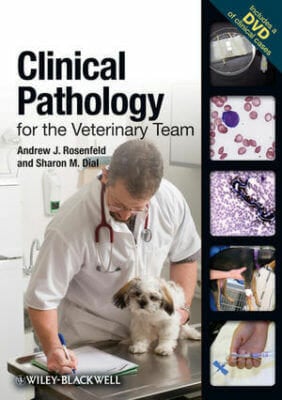
Clinical Pathology for the Veterinary Team
An essential guide for veterinary technicians and lab personnel, focusing on sample handling, machine calibration, diagnostics, and disease processes. Covers blood counts, urinalysis, electrolytes, and cytology with practical applications for in-house labs. Includes an interactive DVD with digital slide cases to improve diagnostic skills. Ideal for veterinary students, technicians, and veterinarians needing quick, reliable lab work references.
Diagnostic Imaging Books

Textbook of Veterinary Diagnostic Radiology, 8th Edition
Master radiographic interpretation with this go-to resource for imaging in dogs, cats, and horses. The 8th edition includes updated radiographic, ultrasound, MRI, and CT techniques with expanded image examples. User-friendly instructions cover patient positioning, radiographic viewing, and safety measures. This revised edition integrates the latest advancements and comes with an eBook for digital access.
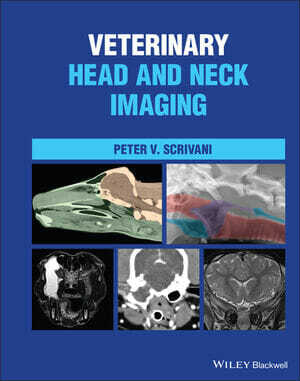
Veterinary Head and Neck Imaging
This comprehensive guide covers diagnostic imaging of the head and neck in dogs, cats, and horses. It explores neuromusculoskeletal, splanchnic, and sense organ imaging, integrating anatomy with imaging interpretation. Chapters include developmental anatomy, modality limitations, and common diseases. Multi-modality approaches and advanced imaging techniques make this book invaluable for veterinary radiologists and clinicians.
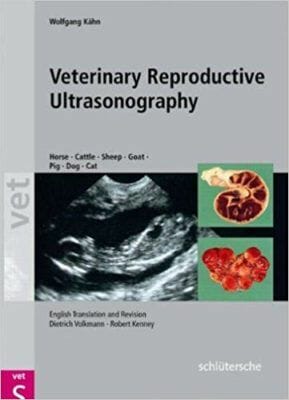
Veterinary Reproductive Ultrasonography
This atlas, featuring 400+ illustrations, is a definitive guide to reproductive ultrasonography in domestic animals, including horses, cows, sheep, goats, pigs, dogs, and cats. It details correct scanning techniques, ovarian structure evaluation, fetal development, pregnancy stages, and reproductive disorders like ovarian cysts. An essential reference for veterinarians involved in reproductive medicine and ultrasonography.
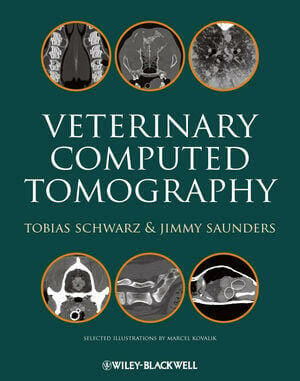
Veterinary Computed Tomography
A practical, illustrated guide to CT in veterinary practice, covering technology, scanner types, positioning, and image quality. Written by specialists from 12 countries, it provides interpretation principles and disease-related CT features across various species. A must-have resource for veterinarians looking to enhance their diagnostic imaging skills.
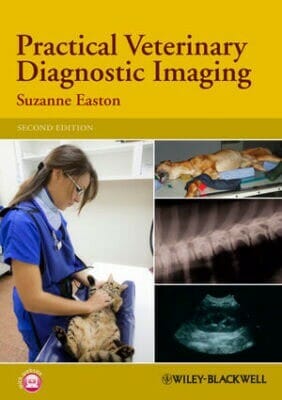
Practical Veterinary Diagnostic Imaging, 2nd Edition
A comprehensive guide covering radiography, ultrasound, fluoroscopy, CT, and MRI in small and large animals. It explains imaging principles, safety, legislation, and practical techniques. With diagrams, photos, revision points, and self-assessment questions, it’s ideal for veterinary students, nurses, and general practitioners.
Anatomy Books

Introduction to Veterinary Anatomy and Physiology, 5th Edition
A comprehensive textbook covering the anatomy and physiology of dogs, cats, birds, exotics, farmed animals, and horses. Ideal for students and professionals, this edition provides clear explanations, high-quality illustrations, and updated content relevant to veterinary practice. Essential for understanding clinical treatment and improving diagnostic skills.
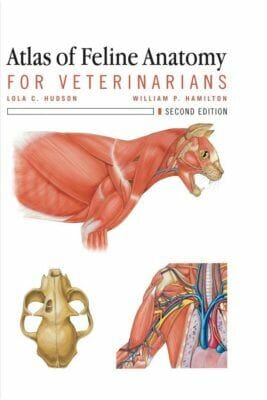
Atlas of Feline Anatomy for Veterinarians
A highly detailed atlas featuring over 266 full-color anatomical drawings arranged by organ system. Focuses on feline anatomy frequently encountered in clinical practice, including a unique section on special senses. Uses Nomina Anatomica Veterinaria terminology to ensure consistency with other veterinary textbooks. A valuable reference for veterinary students and practitioners.

Anatomy of the Dog: An Illustrated Text, 5th Edition
A fully illustrated atlas covering canine anatomy with color line diagrams, radiographs, ultrasound, and CT scans. This edition includes a new section on computed tomography and offers a detailed exploration of body structures and functions. An essential resource for students, practitioners, and researchers looking for a detailed anatomical reference.

Textbook of Veterinary Anatomy, 4th Edition
A comprehensive, clinically oriented reference covering key anatomical concepts for veterinary students and professionals. This edition includes full-color dissection images, detailed species-specific anatomy, and practical insights for clinical application. Covers dogs, cats, horses, cows, pigs, sheep, goats, and birds, making it an essential learning tool.
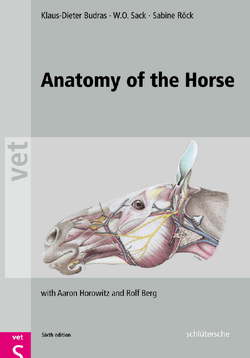
Anatomy of the Horse, 6th Edition
A highly detailed anatomical atlas covering equine structure, function, and clinical relevance. Features updated sections on the eye, abdomen, female reproduction, ultrasonography, and orthopedics. Fully illustrated with color drawings, photos, and radiographs, this book is essential for veterinary students, practitioners, and horse owners.
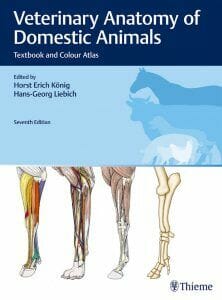
Veterinary Anatomy of Domestic Animals: Textbook and Colour Atlas, 7th Edition
A comprehensive text and atlas covering systematic and topographic anatomy across multiple species. Features high-quality images, integrated sectional anatomy, and diagnostic imaging to enhance clinical applications. Ideal for veterinary students and professionals looking to deepen their understanding of anatomical relationships.
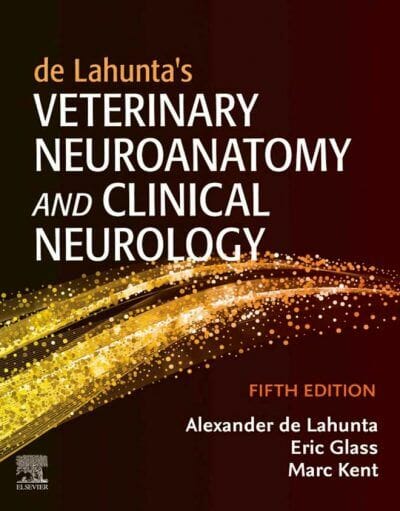
de Lahunta’s Veterinary Neuroanatomy and Clinical Neurology, 5th Edition
Master the diagnosis and treatment of neurologic disorders with this essential reference. Covers anatomy, physiology, and pathology of the nervous system in small animals, horses, and livestock. Includes step-by-step neurology exams, case studies, and hundreds of online videos illustrating real-life cases.
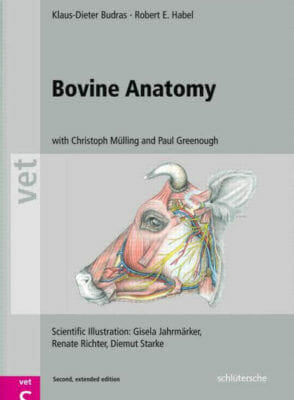
Bovine Anatomy: An Illustrated Text, 2nd Edition
A detailed atlas covering bovine anatomy, including topographic and system-based approaches. Features high-quality illustrations of bones, muscles, organs, and nerves. Includes new clinical anatomy sections, hoof histology, and an in-depth look at the udder and neurodegenerative diseases like BSE and scrapie.
Physiology Books

Cunningham’s Textbook of Veterinary Physiology, 6th Edition
A foundational guide to veterinary physiology, covering cell function, body systems, and homeostasis. This edition presents complex physiological concepts in a user-friendly format, helping students connect theory to clinical practice.

Essentials of Animal Physiology, 4th Edition
Covers core principles of physiology and biochemistry across species. This updated edition explores organ function, environmental adaptation, and energy metabolism, making it ideal for students in biology, home science, and animal sciences.
Behavior Books

Blackwell’s Five-Minute Veterinary Consult Clinical Companion: Canine and Feline Behavior, 2nd Edition
A quick-reference guide to diagnosing and managing behavior issues in dogs and cats. Features expanded coverage on separation anxiety, reactivity, enrichment, and introducing pets, with downloadable client handouts for practice use.
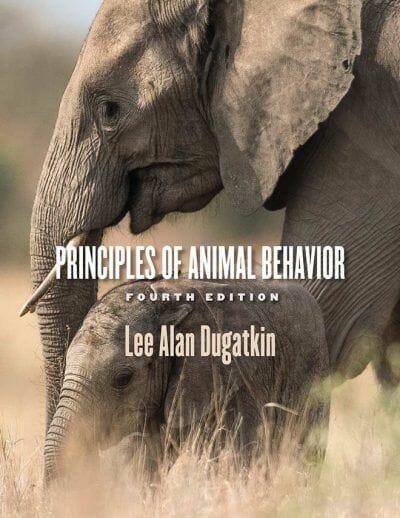
Principles of Animal Behavior, 4th Edition
A state-of-the-art textbook on animal behavior, integrating natural selection, learning, and cultural transmission. This edition features new Cognitive Connection boxes, exploring the cognitive basis of behaviors across species.

Dog Behavior: Modern Science and Our Canine Companions
Explores the science behind canine behavior, covering evolution, brain function, sensory perception, and social interactions. An essential guide for researchers, veterinarians, and students interested in dog behavior and human-canine relationships.

Feline Behaviour and Welfare
Examines cat behavior from an evolutionary and welfare perspective, comparing domestic cats with wild relatives. Covers normal and abnormal behaviors, making it valuable for veterinarians, animal behaviorists, and pet owners.

Exotic Pet Behavior: Birds, Reptiles, and Small Mammals 1st Edition
Covers normal and abnormal behavior patterns in exotic pets, including sensory, social, and eating behaviors. Provides insights into pain-associated behaviors, captivity effects, and medical implications. Includes client education handouts.
Biochemistry Books
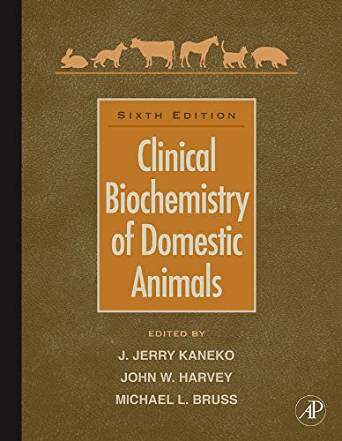
Clinical Biochemistry of Domestic Animals 6th Edition
A trusted resource on biochemical abnormalities in diseases, covering blood, urine, and body fluids. Explains disease-related biochemical changes and their diagnostic applications. Includes reference ranges for various species.
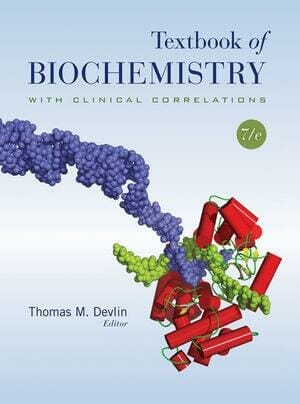
Textbook of Biochemistry with Clinical Correlations 7th Edition
Explores biochemistry’s role in human and veterinary medicine, linking biochemical pathways to clinical conditions. Features end-of-chapter questions, illustrations, and case studies to reinforce learning.
Histology Books

Dellmann’s Textbook of Veterinary Histology 6th Edition
A trusted guide to histology, covering cellular structure, tissue organization, and microscopic anatomy of major organ systems. Fully updated with revised illustrations and explanations for veterinary students and professionals.

Color Atlas of Veterinary Histology, 3rd Edition
A practical atlas covering normal histology of major domestic species with over 900 high-quality photomicrographs. Includes digital access for interactive learning, updated terminology, and expanded introductory chapters.
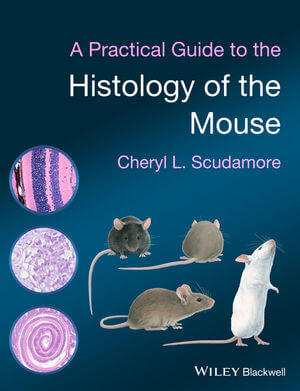
A Practical Guide to the Histology of the Mouse
A full-color atlas designed for veterinary and medical pathologists studying mouse histology. Covers tissue collection, normal microscopic anatomy, anatomical variations, and background lesions in biomedical research models.

Veterinary Histology by Jo Ann Coers Eurell
A concise guide to comparative histology for veterinary students and practitioners. Features 39 chapters on normal histology of domestic and exotic animals, 95+ full-color drawings, and 250+ histology specimens on an integrated CD-ROM.
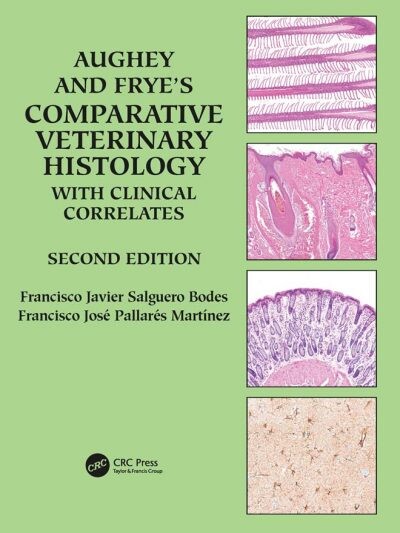
Aughey and Frye’s Comparative Veterinary Histology, 2nd Edition
A comprehensive guide to normal histology across domestic and exotic species. Covers new techniques like in situ hybridization, digital image analysis, and histopathology correlations for improved disease diagnosis.
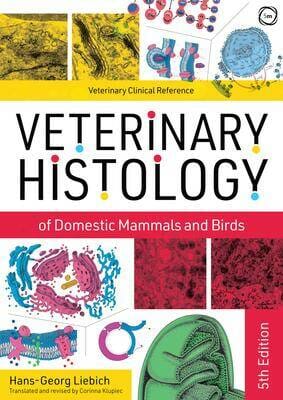
Veterinary Histology of Domestic Mammals and Birds, 5th Edition
A full-color atlas covering histology of domestic mammals and birds. Includes schematics, color micrographs, and electron microscopy images, plus online access to 900+ additional images for veterinary students and professionals.
Pharmacology and Therapeutics Books

Veterinary Pharmacology and Therapeutics, 10th Edition
A comprehensive reference on veterinary drug therapy for all major species. Covers pharmacokinetics, drug classes, and treatment indications, with updated tables, new chapters on ophthalmic and aquatic pharmacology, and access to online figures.

Papich Handbook of Veterinary Drugs, 5th Edition
Includes concise monographs for over 550 veterinary drugs, with 19 new additions and 100+ updated entries. Provides drug data, dosage recommendations, and access to 150+ customizable client handouts via an online **Expert Consult** resource.
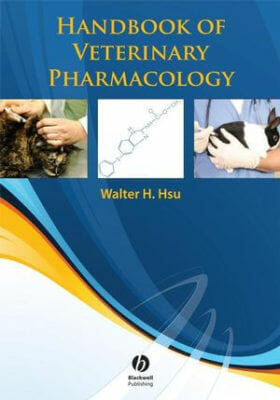
Handbook of Veterinary Pharmacology
A concise guide to veterinary pharmacology concepts and commonly used drugs. Covers principles, drug interactions, and legal aspects. Includes simple line drawings, study questions, withdrawal times, and quick-reference dosage charts.

Antimicrobial Therapy in Veterinary Medicine, 6th Edition
Updated with a global outlook, this book covers mechanisms of antimicrobial action, drug classes, and species-specific applications. Emphasizing antimicrobial stewardship, it addresses rising resistance issues in companion and food animals.
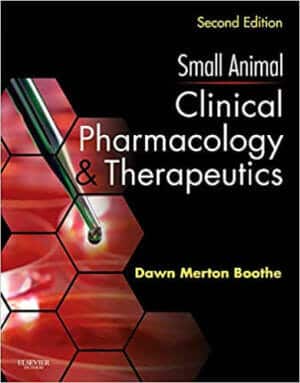
Small Animal Clinical Pharmacology and Therapeutics, 2nd Edition
A comprehensive guide to small animal drug therapy, covering prevention and treatment. Includes detailed drug mechanisms, adverse effects, and dosage tables for quick reference, ensuring safe and effective treatment strategies.
Microbiology Books

Veterinary Microbiology, 4th Edition
Covers bacterial, fungal, and viral diseases with recent research, diagnostics, and treatment insights. Designed for veterinary students and practitioners, it includes full-color images for better learning.
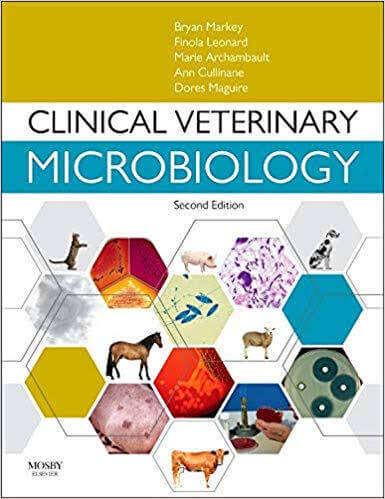
Clinical Veterinary Microbiology, 2nd Edition
Provides an in-depth guide on bacterial, mycological, and viral diagnostics, including sample collection, isolation, and identification. Covers key pathogens like BSE, E. coli, and Salmonella in a clear, structured format.

Essentials of Veterinary Bacteriology and Mycology, 6th Edition
A key text for veterinary students, covering microbial pathogens, molecular biology, and disease classification. Includes glossaries and follows the latest microbial taxonomy for easy comprehension.

Concise Review of Veterinary Microbiology, 2nd Edition
Covers key microbial diseases in animals, including bacteria, fungi, and viruses. Features updated nomenclature, full-color diagrams, and expanded chapters on biosecurity, antibiotic resistance, and immunology.
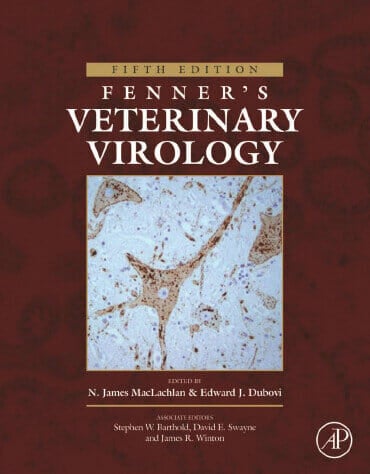
Fenner’s Veterinary Virology, 5th Edition
A comprehensive guide to animal virology, covering viral structure, genome replication, and viral diseases. Includes new insights on emerging zoonotic viruses and their impact on animal health.
Parasitology Books

Veterinary Parasitology, 5th Edition
A comprehensive guide covering parasites in all major domestic species. Features updated research, taxonomy-based organization, diagnostic techniques, and effective parasite control strategies.
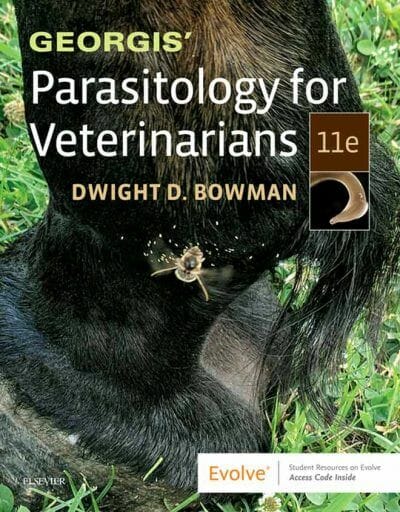
Georgis’ Parasitology for Veterinarians, 11th Edition
Provides in-depth coverage of all veterinary parasites, including rare species. Features 600+ high-quality images, diagnostic methods, and treatment protocols for various animal hosts.
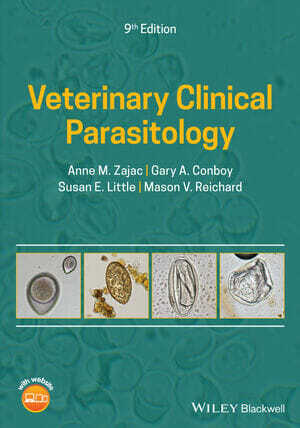
Veterinary Clinical Parasitology, 9th Edition
An essential diagnostic guide with high-quality images for parasite identification. Covers fecal exams, blood parasites, and arthropods in multiple animal species.
Immunology Books

Tizard Veterinary Immunology, 11th Edition
A comprehensive guide covering immunologic principles, diseases, and responses in domestic animals. Features real-world examples, updated content, and educator resources.
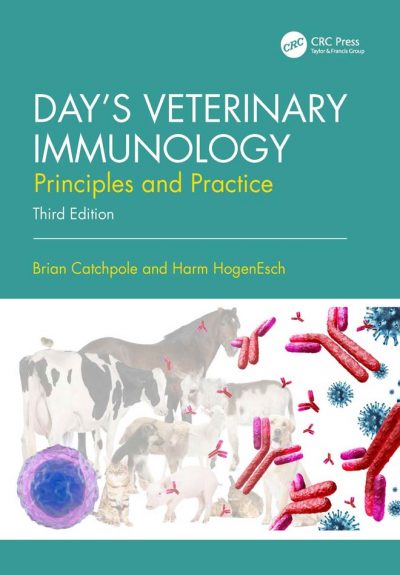
Day’s Veterinary Immunology: Principles and Practice, 3rd Edition
Updated with case studies, diagnostic test procedures, key learning points, and animations. Covers clinical immunology across companion and farm animals.
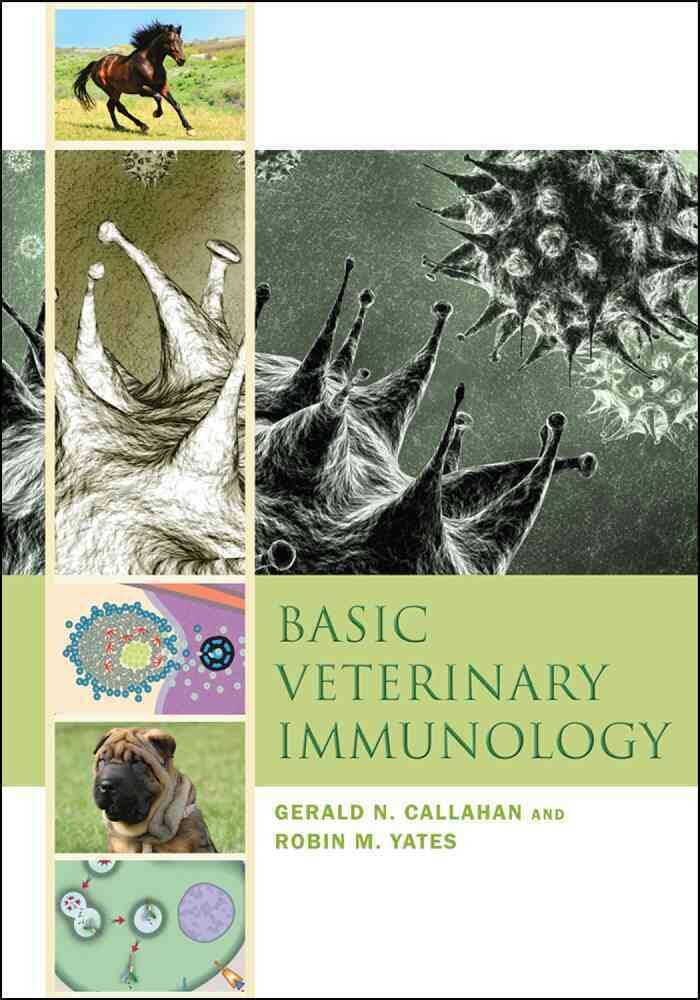
Basic Veterinary Immunology
Integrates immunology with veterinary practice using case-based learning. Includes 250+ full-color illustrations, clinical examples, and online teaching materials.
Practice Management Books

Blackwell’s Five-Minute Veterinary Practice Management Consult 3rd Edition
Covers 320 topics on managing clients, finances, HR, IT, legal issues, and marketing in veterinary practice. Updated with 26 new topics and expanded insights.

Leadership in Veterinary Medicine
Explores key leadership concepts for veterinary professionals, providing self-reflection exercises, case studies, discussion questions, and practical strategies.

Ten Steps to Building a Successful Veterinary Practice
A practical guide on hiring, team building, marketing, financial planning, and client retention. Ideal for small veterinary businesses seeking structured growth.
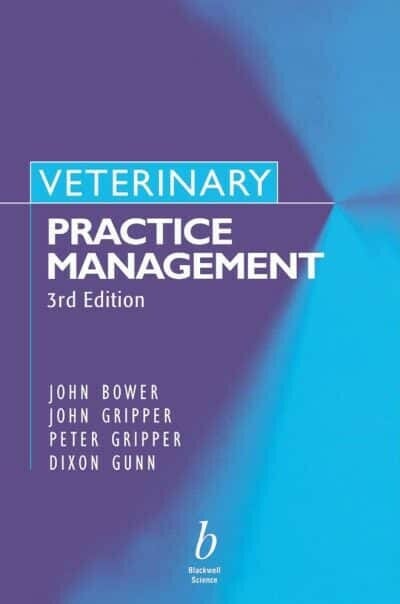
Veterinary Practice Management, 3rd Edition
A vital guide for setting up and managing a veterinary practice. Covers business efficiency, staff appraisals, pharmacy management, marketing, and legal aspects.
Conclusion
These were the Best and most useful Veterinary Books you Have to read in 2025, but there are also many Books for Veterinary Practitioners in our library.
Do You Need More Veterinary Books?
You Can Now Browse and Download +3000 Veterinary Books Online In All Veterinary Fields.
Browse All Recently Added Books
